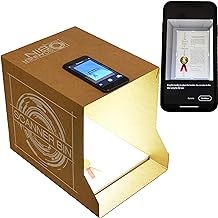What Is Considered Evidence In Academic Writing: Examples


Evidence in academic writing refers to the facts, examples, or sources used to support a claim. This can include data from experiments, findings from studies, or information from published sources.
It is essential to use evidence to build a critical argument and cite and reference it properly to show where it came from.
In academic writing, evidence plays a crucial role in supporting your points and strengthening your argument. It helps to provide credibility and validity to your work by using information from reliable sources.
By integrating evidence effectively into your writing, you can demonstrate a deep understanding of the subject matter and make a compelling case for your arguments.
Check out this Youtube video: “Academic Writing: Using Evidence – YouTube” to learn about what is considered evidence in academic writing and see examples.
Types of Evidence
Empirical evidence
Empirical evidence in academic writing refers to data that is obtained through direct observation or experience. This type of evidence is often based on scientific methods, experiments, and measurements.
For instance, a study showing the impact of exercise on improving cardiovascular health through specific heart rate measurements serves as empirical evidence in academic writing. It is considered reliable due to its objective nature and the use of verifiable data to support claims.
Anecdotal evidence
Anecdotal evidence is derived from personal experiences or observations, making it less reliable in academic writing. While it can provide valuable insights or illustrate a point, it lacks the scientific rigor and generalizability of empirical evidence.
An example of anecdotal evidence in academic writing could be a personal story shared to illustrate a concept, but it should be used cautiously and in conjunction with more robust evidence.
Statistical evidence
Statistical evidence involves the use of numerical data and statistical analysis to substantiate arguments or claims in academic writing. This type of evidence relies on organized, validated, and mathematically expressed observations.
For instance, a study demonstrating the correlation between student attendance and academic performance using statistical analysis serves as statistical evidence in academic writing, providing quantitative support for the argument.
| Evidence Type | Characteristics | Example |
|---|---|---|
| Empirical evidence | Based on direct observation and scientific methods | Experiment measuring the effects of a new drug |
| Anecdotal evidence | Derived from personal experiences or observations | Personal story illustrating the impact of a teaching method |
| Statistical evidence | Relies on numerical data and mathematical analysis | Research study correlating student attendance and grades |
What Is Considered Evidence in Academic Writing
Scholarly articles, often written by specialists in a specific field, are crucial evidence in academic writing, presenting original research or analyzing existing studies. They undergo rigorous peer review, ensuring the quality and integrity of the content.
This enhances their credibility and trustworthiness as evidence for academic discourse.
Peer-reviewed journals are key sources of evidence in academic writing. Articles published in these journals have undergone review by experts in the field, validating the accuracy and reliability of the information presented.
This rigorous evaluation process distinguishes peer-reviewed journals as reputable sources of evidence for scholarly work.
Books and academic publications play a pivotal role in providing evidence for academic writing. Authored by scholars and researchers with established credentials, these materials offer in-depth insights and comprehensive analyses that enrich academic discourse.
Their credibility and reliability as evidence contribute significantly to the strength of scholarly arguments.
| Scholarly Articles | Peer-Reviewed Journals | Books and Academic Publications |
|---|---|---|
| Written by specialists | Rigorous peer review | Authored by scholars/researchers |
| Original research | Ensures quality | Provides in-depth insights |
| Analyzes existing work | Validates accuracy | Strengthens scholarly arguments |
Scholarly articles, peer-reviewed journals, and books are indispensable forms of evidence in academic writing, elevating the quality and credibility of scholarly discourse. Their authority and depth substantiate academic arguments, contributing to the richness of scholarly conversations.
Examples of Evidence in Academic Writing
When it comes to academic writing, quoting from reputable sources is essential to establish credibility and back up arguments. For instance, referencing well-known experts in the field such as renowned scholars or reputable institutions can strengthen the validity of the content.
Another crucial aspect is referencing scholarly research. Academic writing often relies on citing studies from esteemed journals and peer-reviewed articles, providing a foundation for the presented argument.
Utilizing such research helps in substantiating claims with reliable and well-vetted information. Citing statistics and data forms a fundamental pillar of evidence in academic writing.
For instance, incorporating relevant and reputable statistical data from sources like government reports, scholarly articles, or professional organizations can enhance the persuasiveness of the academic work.
Tips for Using Evidence in Academic Writing
Evaluating the credibility of sources
When evaluating the credibility of sources, it’s crucial to consider the purpose and intended audience, authority and credibility, accuracy and reliability, as well as currency and timeliness. An example of a popular evaluation method is the CRAAP test, which stands for Currency, Relevance, Authority, and Purpose. This test ensures that the sources reflect recent research, are related to the research topic, come from respected publications, and are authored by field experts.
Properly integrating evidence into the text
Properly integrating evidence involves quoting, paraphrasing, and summarizing while ensuring to provide citations for each form of evidence used. It’s essential to be specific when discussing evidence, accurately conveying the ideas and data in the text. For example, in academic writing, providing and explaining evidence is crucial for the success of the paper. Integrating evidence effectively depends on the discipline and the context it prioritizes, whether authorship or information prominent citations.
Avoiding plagiarism in academic writing
To avoid plagiarism, it’s vital to cite sources, include quotations, and paraphrase effectively. Properly citing sources and not procrastinating with research and assignments are effective ways to prevent unintentional plagiarism. Organizing and labeling notes, as well as compiling a list of citations as one goes, can aid in avoiding the pitfall of unintentional plagiarism.
| Evaluating Credibility of Sources | Properly Integrating Evidence | Avoiding Plagiarism |
|---|---|---|
| Purpose and intended audience | Quoting, paraphrasing, summarizing | Citing sources, including quotations, paraphrasing effectively |
| Authority and credibility | Specific discussion of evidence | Not procrastinating with research and assignments |
| Accuracy and reliability | Discipline-specific integration of evidence | Organizing and labeling notes |
| Currency and timeliness | Compiling a list of citations as one goes |
Remember, the credibility of sources, proper integration of evidence, and avoidance of plagiarism are essential for academic writing success. By following these tips, your writing will be enriched with well-evaluated sources and seamlessly integrated evidence whilst avoiding plagiarism pitfalls.
Keep writing compelling academic content!
The Role of Counterarguments in Academic Writing
Recognizing opposing viewpoints
Respectfully acknowledge opposing viewpoints by incorporating phrases of concession such as “although” or “however”. By openly discussing conflicting perspectives, it builds credibility and trust with the audience, demonstrating a comprehensive understanding of the topic.
Addressing counterarguments with evidence
Refuting opposing arguments is crucial in academic writing. It involves countering opposing arguments effectively to strengthen the primary viewpoint.
This can be achieved through the use of evidence, logical reasoning, and critical analysis to demonstrate the superiority of the presented argument.
Additionally, it is essential to utilize real-world examples, studies, and expert quotes to substantiate the counterarguments. By incorporating these elements, the writer reinforces the validity and credibility of their stance, providing a compelling and well-supported position.
The Use of Examples in Academic Writing
Illustrating concepts with real-world examples
Real-world examples play a crucial role in academic writing as they help bridge the gap between abstract concepts and tangible experiences. For instance, when discussing economic theories, using real-world examples such as the 2008 financial crisis or the impact of COVID-19 on global markets can provide a practical understanding for readers.
Moreover, these examples can offer diverse perspectives and stimulate critical thinking, enhancing the overall depth of academic discourse.
Strengthening arguments with concrete evidence
In academic writing, concrete evidence is fundamental for reinforcing arguments and validating claims. For instance, incorporating statistical data, scholarly research findings, or direct quotations from authoritative sources can bolster the credibility of an academic paper or thesis.
Furthermore, integrating real-world case studies can provide tangible evidence to support theoretical frameworks, thereby enriching the overall quality of the academic work.
Statistics vs. Anecdotal Evidence in Academic Writing
Understanding the differences
Statistics in academic writing involve using quantifiable data and figures to support arguments and conclusions. On the other hand, anecdotal evidence relies on personal experiences and narratives to convey a point.
While statistics provide a broader perspective with measurable evidence, anecdotal evidence offers a more personal and relatable touch to the writing.
Knowing when to use each type of evidence
It is essential to use statistics when presenting factual data and figures that warrant credibility and authority. Conversely, anecdotal evidence is valuable when aiming to create an emotional connection with the audience and when personal experiences are relevant to the topic being discussed.
It adds a human element to the writing, making it more engaging and relatable, especially in storytelling or memoir genres.
Historical Facts as Evidence in Academic Writing
Utilizing historical events to support arguments
Historical events serve as compelling evidence in academic writing, lending credibility and depth to arguments. For instance, when discussing the impact of the industrial revolution on labor rights, citing specific instances of worker exploitation during that era can fortify the argument.
Similarly, when making a case for societal transformation, referencing historical events such as civil rights movements or the fall of oppressive regimes provides substantial evidence to support the argument’s validity.
Analyzing the impact of historical evidence
The impact of historical evidence in academic writing is profound. It lends context and authenticity to the narrative, allowing readers to connect with the argument on a deeper level.
For instance, analyzing the impact of historical evidence in discussions about cultural shifts can reveal patterns and recurring themes across different periods, augmenting the credibility of the academic discourse. Moreover, historical evidence allows for the identification of long-term consequences, facilitating a comprehensive understanding of the subject matter.
| Historical Events | Impact on Academic Writing |
|---|---|
| Industrial Revolution | Strengthens arguments related to labor rights and societal progression. |
| Civil Rights Movements | Validates cases for social change and highlights the implications of activism. |
| Revolutionary Periods | Provides historical context for political and cultural transformations. |
By incorporating well-researched historical evidence, academic writing becomes enriched and persuasive, effectively communicating complex ideas while fostering a meaningful connection with readers.
Quotes as Evidence in Academic Writing
Incorporating quotes from experts is an essential practice in academic writing. It adds credibility and authority to the ideas presented in the paper.
When integrating quotes, it’s crucial to use introductory phrases to introduce them, such as “According to” or “As explained by.” This helps contextualize the quote and attributes the information to its source. Additionally, using quotations to reinforce key points strengthens the argument by providing direct evidence from reliable sources.
This practice enhances the persuasive impact of the writing by presenting opinions and viewpoints from established experts in the field.
| Example | Explanation |
|---|---|
| “According to Dr. Smith, ‘The impact of climate change on marine ecosystems cannot be overstated'” | This introductory phrase provides context for the quote and attributes the statement to its source, Dr. Smith. |
| “As explained by Professor Johnson, ‘The findings of this research highlight the need for sustainable urban planning strategies'” | Again, the introductory phrase contextualizes the quote, and the attribution adds credibility to the idea presented. |
Quotations from experts should be selected strategically to support the main argument and should serve to enhance the overall quality of the academic work. When used effectively, these quotes reinforce the writer’s viewpoint and provide a solid foundation for the ideas being put forth.
Using quotations to reinforce key points
Quotations are not merely used as filler content but are critical components that strengthen the writer’s assertions. They are like powerful reinforcements that bolster the main points and lend support to the writer’s perspective.
The expertise and authority of the quoted individuals add weight to the arguments presented, making the writer’s case more convincing and persuasive.
This is essential to demonstrate the depth and breadth of research carried out by the writer. Furthermore, it serves as a nod to the established views in the academic domain, thereby reinforcing the writer’s stance.
Incorporating quotes from experts and using them to reinforce key points elevates the quality and credibility of academic writing.
Remember, it’s not about the quantity of quotes used, but rather the strategic and meaningful integration that enhances the academic work.
Internal Links as Evidence in Academic Writing
Connecting ideas within the text
Internal links play a crucial role in connecting ideas within academic writing, enriching the overall coherence and readability. These links act as bridges between various sections, allowing readers to seamlessly navigate through the content.
For example, when discussing a particular theory, embedding a hyperlink to a previous section that introduces its origin or historical context strengthens the overall understanding for the reader.
Enhancing the flow of academic writing
In academic writing, internal links serve as a tool for enhancing the flow of the content by guiding readers through a logical progression of ideas. Through strategic placement of internal links, authors can ensure smooth transitions between concepts, enabling the reader to follow the narrative effortlessly.
For instance, seamlessly segueing from a discussion on historical background to an analysis of current implications can be achieved through thoughtful internal linking, enhancing the overall flow and coherence of the academic piece.
Benefits
Examples
Enhanced Coherence
Linking the historical context of a scientific theory to its contemporary applications within the same academic paper.
Improved Readability
Creating internal links between sections discussing related research methodologies, allowing readers to access supporting information seamlessly.
Logical Progression
Establishing a progression from theoretical frameworks to practical exemplification through well-placed internal links.
Using Definitions as Evidence in Academic Writing
Clarifying terms and concepts
In academic writing, clarifying terms and concepts is crucial for ensuring a common understanding among readers. Definitions serve as evidence by providing a clear and precise explanation of key terms, theories, or concepts.
They help to establish a foundation for the arguments presented, enabling readers to comprehend the context of the discussion. For example, in a research paper on psychology, providing a definition of “cognitive dissonance” offers evidence that the writer understands the concept and allows readers to follow the discussion effortlessly.
Establishing a common understanding through definitions fosters critical thinking by guiding readers to grasp the fundamental concepts within the subject matter. When a writer defines terms and concepts effectively, it cultivates a shared knowledge base, enabling readers to engage in critical analysis and evaluation of the presented ideas.
This facilitates a more coherent and persuasive academic discourse, solidifying the writer’s arguments with clear evidence and enhancing the overall credibility of the work. For instance, in a sociology essay, defining “social stratification” enables the writer to build a robust case supported by evidence, thereby strengthening the academic integrity of the paper.
Incorporating Humor and Jokes as Evidence in Academic Writing
Adding humor to engage the audience
Incorporating humor in academic writing can effectively engage the audience, making the content more relatable and enjoyable to read. By infusing a touch of lightheartedness, writers can create a welcoming tone, encouraging readers to stay interested and invested in the material.
Using jokes to illustrate a point
Using jokes to illustrate a point in academic writing can serve as evidence of a writer’s ability to simplify complex concepts. Humorous anecdotes or witty remarks can provide real-life examples, making the content more memorable and impactful for the readers.
Understanding the Ethics of Using Evidence in Academic Writing
Maintaining academic integrity
Maintaining academic integrity involves upholding honesty and acknowledging the contribution of existing knowledge and ideas in academic work. This includes referencing sources accurately, adhering to citation guidelines, and avoiding plagiarism.
Avoiding misrepresentation of evidence
Avoiding misrepresentation of evidence entails presenting information accurately without distorting its meaning or misquoting sources. This involves using evidence ethically, ensuring it aligns with the claims being made, and refraining from deliberate misuse of original author’s words.
It’s crucial to uphold academic integrity by recognizing and referencing existing knowledge and ideas, steering clear of misrepresenting evidence, and presenting information accurately without distortion. This ensures a scholarly approach and enhances the credibility of academic work.
Recommended Amazon Products for Using Evidence in Academic Writing
Here’s a curated list of products that can help you incorporate evidence effectively in your academic writing. These recommendations are based on functionality, price, and reviews.
1. Kindle Paperwhite
The Kindle Paperwhite is a lightweight and portable e-reader that allows you to carry an extensive library of scholarly articles, peer-reviewed journals, and academic publications wherever you go. With its glare-free display and long battery life, it’s a perfect tool for referencing and gathering evidence on the go. Check out the Kindle Paperwhite on Amazon.


Pros and Cons of Kindle Paperwhite
| Pros | Cons |
|---|---|
| Portable with a long battery life | Additional expense for ebook purchases |
| Built-in adjustable light for reading in any environment | Limited to e-books and digital content |
2. Moleskine Classic Notebook
The Moleskine Classic Notebook is a timeless and reliable tool for jotting down notes, conducting research, and drafting academic arguments backed by evidence. Its durable cover and high-quality paper make it an essential companion for capturing scholarly quotes and formulating counterarguments. Explore the Moleskine Classic Notebook on Amazon.


Pros and Cons of Moleskine Classic Notebook
| Pros | Cons |
|---|---|
| Classic design with durable cover | Manual input and organization of notes |
| High-quality paper suitable for various writing instruments | Limited storage capacity compared to digital notes |
3. Pilot G2 Retractable Gel Ink Pens
The Pilot G2 Retractable Gel Ink Pens are known for their smooth writing experience, making them ideal for annotating scholarly articles, peer-reviewed journals, and academic publications. With their archival-quality ink, they ensure that your academic evidence remains clear and easily readable over time. Discover the Pilot G2 Retractable Gel Ink Pens on Amazon.


Pros and Cons of Pilot G2 Retractable Gel Ink Pens
| Pros | Cons |
|---|---|
| Smooth writing experience | Limited lifespan compared to digital notes |
| Archival-quality ink for long-lasting evidence | Potential for smudging and ink smears |
4. NeatReceipts Mobile Document Scanner
The NeatReceipts Mobile Document Scanner provides a convenient way to digitize and organize your physical evidence, such as quotes from experts, statistical data, and real-world examples. This portable scanner enables seamless integration of physical evidence into your digital academic writing workflow. Check out the NeatReceipts Mobile Document Scanner on Amazon.


Pros and Cons of NeatReceipts Mobile Document Scanner
| Pros | Cons |
|---|---|
| Portability for on-the-go scanning | Additional expense compared to traditional scanners |
| Seamless integration with digital workflow | Learning curve for effective use |
5. Post-it Flags
Post-it Flags are handy tools for marking, organizing, and referencing specific sections of scholarly articles, peer-reviewed journals, books, and academic publications. They provide a visual way to highlight important evidence and structure your academic writing process. Explore Post-it Flags on Amazon.


Pros and Cons of Post-it Flags
| Pros | Cons |
|---|---|
| Easy to use for marking and organizing evidence | Manual organization and retrieval of physical flags |
| Provides a visual aid for referencing | Limited to marking specific physical documents |
Top Recommended Product for Using Evidence in Academic Writing
If you’re looking for the best solution for effectively using evidence in academic writing, we highly recommend the Kindle Paperwhite. With its portability, extensive storage capacity, and glare-free display, it’s the perfect tool for accessing scholarly articles, peer-reviewed journals, and academic publications. Ready to improve your evidence-based academic writing? Check out the Kindle Paperwhite today for the best results!


Conclusion
Evidence in academic writing examples can include data, statistics, research findings, and quotes from authoritative sources that support the author’s argument. These pieces of evidence are used to provide credibility and validity to the writer’s claims and help persuade the reader of the strength of the argument presented.
By including concrete evidence, academic writers can effectively support their ideas and address potential counterarguments.
Furthermore, academic writing examples often incorporate evidence in the form of direct quotations, paraphrases, and summaries from relevant sources. These citations not only lend credibility to the writer’s work but also demonstrate the depth of research and knowledge on the topic.
In academic writing, it is essential to properly attribute the evidence to its original source through appropriate citation styles, such as APA, MLA, or Chicago, to avoid plagiarism and uphold academic integrity.
Evidence in academic writing examples serves as the backbone of a well-supported and well-reasoned argument. It provides the necessary support and validation for the writer’s ideas, helping to build a strong and persuasive case for the author’s stance on the topic.
By utilizing a variety of evidence types and properly citing sources, academic writers can effectively convey their message and contribute to the scholarly discourse in their field of study.
Frequently Asked Questions
What is an example of evidence in academic writing?
What is considered academic evidence?
How do you select evidence for academic writing?
What is an example of written evidence?
What are some examples of evidence?
What are the 4 methods to incorporate evidence into academic writing?
Do academic writers use evidence?
What is evidence, and why is it important?
Reference Links
- https://www.quora.com/When-is-it-okay-to-use-humor-in-academic-writing-1
- https://history.ucla.edu/academics/undergraduate/history-writing-center/thesis-statements-1
- https://advice.writing.utoronto.ca/using-sources/how-not-to-plagiarize/
- https://www.collinsdictionary.com/dictionary/english/anecdotal-evidence




